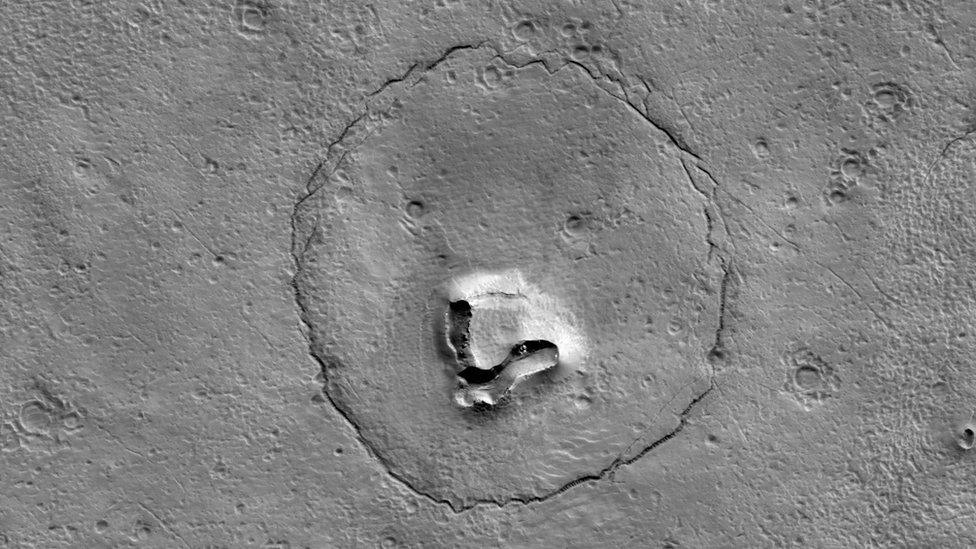Face of a bear found on the surface of Mars
- Published
- comments

The face of a bear has been found in the most unusual of places - the surface of Mars.
Astronomers from the University of Arizona found the strange structure using high resolution cameras onboard a Nasa spacecraft, orbiting above the red planet.
Two craters, likely to be from asteroids that have impacted the surface, have made the bear's eyes. While a sloping - possibly volcanic - collapsed hill is its snout.
A round pattern is the shape of the bear's head, which researchers say could be the outline of an area where dust has covered and settled over another larger crater.
Other strange things found on Mars
The rover took this picture of the shiny piece of thermal blanket which was a part of its landing gear
It's not the first unusual discovery on the Martian surface.
Last summer, Nasa's Mars rover, Perseverance, found a strange shiny silver object amongst the rocks.
However, it wasn't an alien discovery. On closer inspection it turned out to be a piece of litter...from the rover itself!
Perseverance: Nasa's rover will begin the search for signs of life on Mars
The largest volcano on Mars, called Olympus Mons, is also the solar system's tallest mountain!
Check out these before and after shots of the Christmas Eve Martian meteorite strike
Asteroids just like the one that helped carve out the 'bear's face' on Mars crash into the red planet all the time.
Meteorite strikes are so common that there are more than 200 impacts on the Martian surface during each Earth year.
One meteor the size of a VAN smashed into the planet's surface on Christmas Eve 2021. The impact unearthed loads of ice beneath the surface of the planet.
Mars is a little slower, and further from the Sun than the Earth, so a full year for the red planet takes 687 Earth days.
Why do we see faces in things?
What a cheesy smile this grate face is wearing
It's not unusual for human brains to see human faces in objects and places where there are none.
It's something known as face pareidolia (you say it like this: 'pa-ray-doy-lee-ah'), which is when the brain tries to make sense of things.
The brain recognises something as a possible face in a few milliseconds and it comes from our development as babies identifying faces and emotions.
Find out more here: Here's why we see faces in everyday stuff
- Published30 October 2022
- Published28 February 2021
- Published3 December 2022
